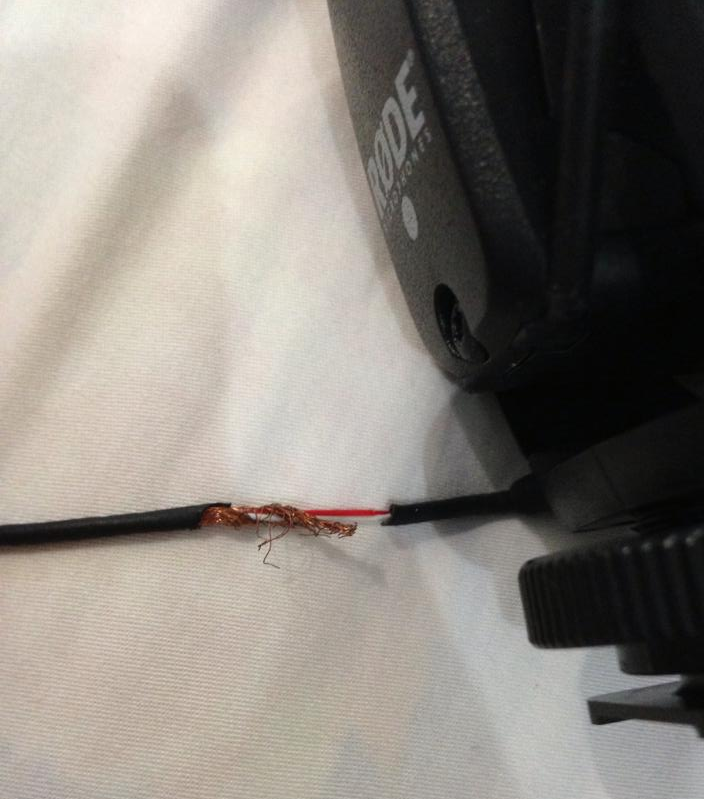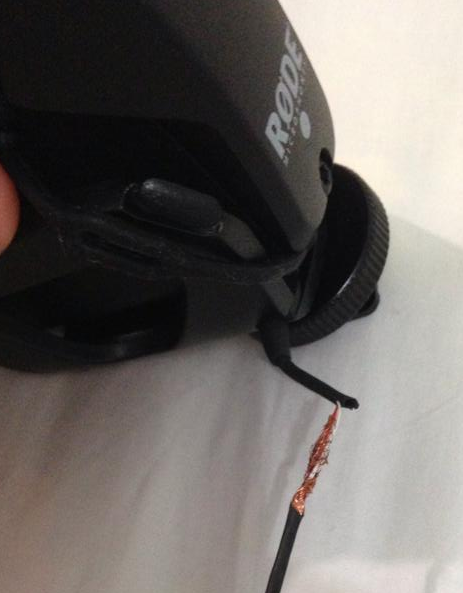You are using an out of date browser. It may not display this or other websites correctly.
You should upgrade or use an alternative browser.
You should upgrade or use an alternative browser.
Can my Rode Videomic Pro be fixed? (pics)
- Thread starter gibbo
- Start date
If you are good with tools and a soldering gun you can fix it, but with the break so close to the mic you only get one shot. I don't remember if you can easily open up the mic to re-wire entirely. If I remember correctly, Rode has a decent warranty period; ten (10) years I think, so you can send it directly to Rode. If not under warranty, you can always send it to a reputable repair shop; contact the vendor you bought it from for recommendations.
This is one reason I don't like consumer devices. If you have to pay for it a repair like this will be $75 to $150, and you paid, what, about $225 for the RVM? This means the repair will cost you 1/3 to 2/3 of the cost of the mic. With a pro or prosumer mic you just plug in a new cable; and no down time for repairs. That's what I mean when I talk about investing in your future - you're now paying for a repair when you could be buying a case or a memory card or saving up for ____________ (fill in the blank). At the very least you are out the time you may have used it, anywhere from two (2) to twelve (12) weeks, maybe more.
BTW, were you REALLY careful when you packed it up? That's a stress break, so the cable was pulled extremely hard while it was hooked up to your recording device. Or it was just tossed into the mic bag and not carefully packed; something heavy was tossed onto the cable in the bag. Or was yanked out of the bag in a hurry and the cable caught on something? Or did you clamp it into the shoe mount? Or....
This is one reason I don't like consumer devices. If you have to pay for it a repair like this will be $75 to $150, and you paid, what, about $225 for the RVM? This means the repair will cost you 1/3 to 2/3 of the cost of the mic. With a pro or prosumer mic you just plug in a new cable; and no down time for repairs. That's what I mean when I talk about investing in your future - you're now paying for a repair when you could be buying a case or a memory card or saving up for ____________ (fill in the blank). At the very least you are out the time you may have used it, anywhere from two (2) to twelve (12) weeks, maybe more.
BTW, were you REALLY careful when you packed it up? That's a stress break, so the cable was pulled extremely hard while it was hooked up to your recording device. Or it was just tossed into the mic bag and not carefully packed; something heavy was tossed onto the cable in the bag. Or was yanked out of the bag in a hurry and the cable caught on something? Or did you clamp it into the shoe mount? Or....
If you are good with tools and a soldering gun you can fix it, but with the break so close to the mic you only get one shot. I don't remember if you can easily open up the mic to re-wire entirely. If I remember correctly, Rode has a decent warranty period; ten (10) years I think, so you can send it directly to Rode. If not under warranty, you can always send it to a reputable repair shop; contact the vendor you bought it from for recommendations.
This is one reason I don't like consumer devices. If you have to pay for it a repair like this will be $75 to $150, and you paid, what, about $225 for the RVM? This means the repair will cost you 1/3 to 2/3 of the cost of the mic. With a pro or prosumer mic you just plug in a new cable; and no down time for repairs. That's what I mean when I talk about investing in your future - you're now paying for a repair when you could be buying a case or a memory card or saving up for ____________ (fill in the blank). At the very least you are out the time you may have used it, anywhere from two (2) to twelve (12) weeks, maybe more.
BTW, were you REALLY careful when you packed it up? That's a stress break, so the cable was pulled extremely hard while it was hooked up to your recording device. Or it was just tossed into the mic bag and not carefully packed; something heavy was tossed onto the cable in the bag. Or was yanked out of the bag in a hurry and the cable caught on something? Or did you clamp it into the shoe mount? Or....
Hi AA, I was hoping it would be you that replied

Not sure if it can be easily opened but I'll try it on the weekend when I have some time.
Yeah I paid $230 I think from a local place. I would like to one day invest in a better mic but the RVMP was purchased to be used with my canon DSLR (600D/t3i) because of the +20db gain option and I lower the levels on the camera to one notch above 0 to get rid of as much of the hiss/noise floor as possible. Isn't the RVMP the best option for this?
We were working on a project and moving to another location, about 10 minutes drive away and instead of putting the mic into a hard plastic case (lunchbox) I placed it carefully in MY bag and was careful with it. It didn't catch on anything as far as I know. The guy who was doing sound may or may not have caused the damage when we were packing up, I don't know/
Last edited:
Looks like it could be a zipper snag too.
But yes,the ground/shielding is hosed.. looks like it's totally disconnected. There could be issues with the other two signal wires as well. In my opinion, you'll want to fix it on the inside of the mic if possible, as the connections on the board inside the mic could already be stressed or broken as well.
But yes,the ground/shielding is hosed.. looks like it's totally disconnected. There could be issues with the other two signal wires as well. In my opinion, you'll want to fix it on the inside of the mic if possible, as the connections on the board inside the mic could already be stressed or broken as well.
Looks like it could be a zipper snag too.
But yes,the ground/shielding is hosed.. looks like it's totally disconnected. There could be issues with the other two signal wires as well. In my opinion, you'll want to fix it on the inside of the mic if possible, as the connections on the board inside the mic could already be stressed or broken as well.
Thanks Will. Good point. I'll crack it open on the weekend. Expect more pics!
Thanks
looks like internally it's fine. As you can see in the first two pics there's a rubber stopper thing on the frame that the cable passes through that prevents the cable from being tugged and pulled from the actual mic itself.
To be clear, when I use it, it still works, audio still gets recorded but there's static.
How does the shielding actually work? Could I use duct tape and individually wrap each wire to separate them? or does it need to be copper?
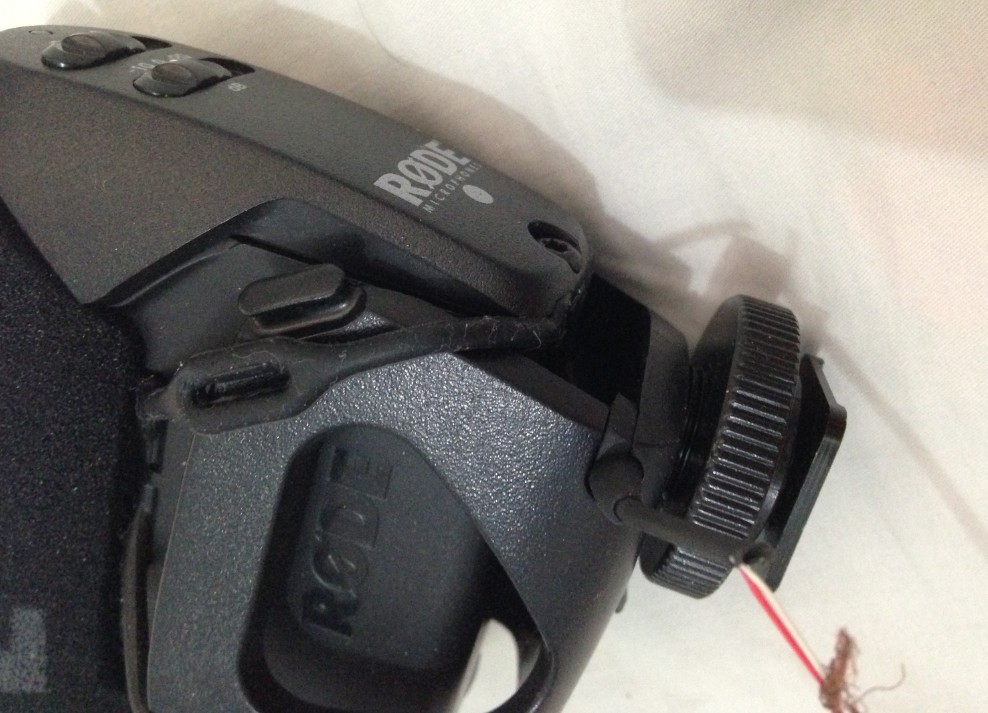
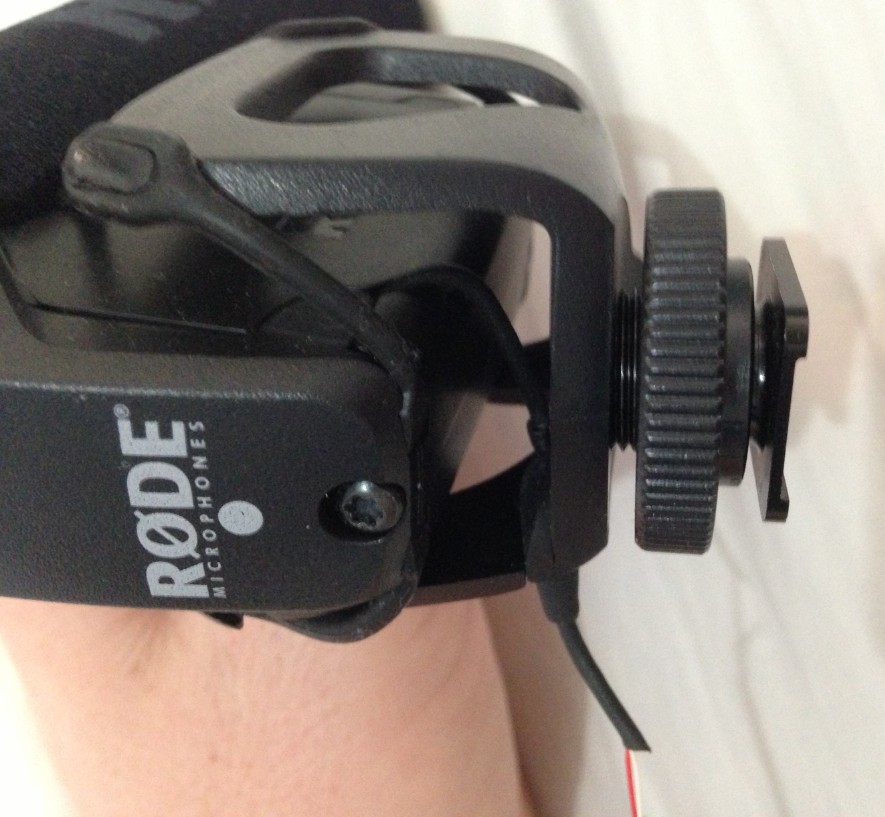
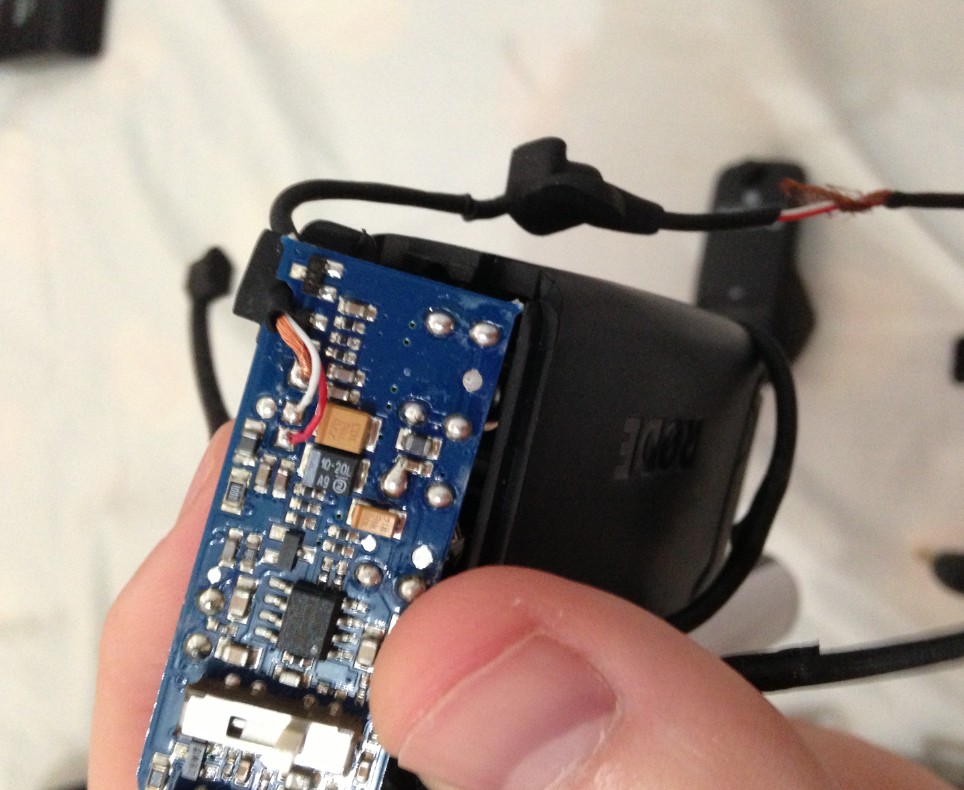
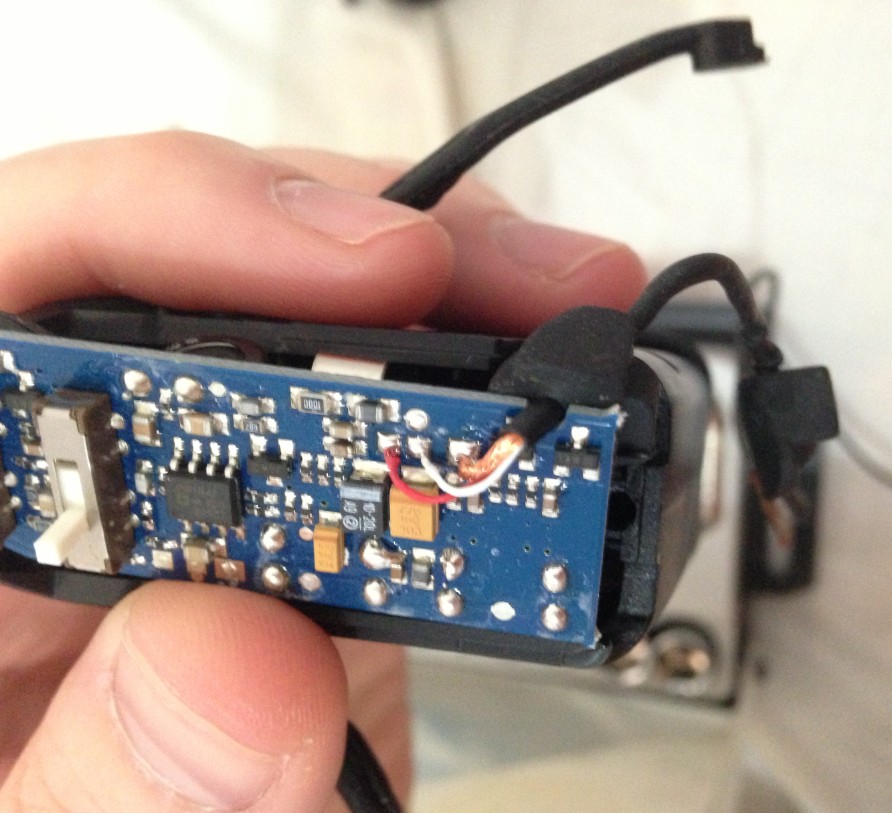
To be clear, when I use it, it still works, audio still gets recorded but there's static.
How does the shielding actually work? Could I use duct tape and individually wrap each wire to separate them? or does it need to be copper?




You should replace the entire cable, rubber stop(s) included. Radio Shack is your friend. As long as you've voided the warrantee by opening the unit you may as well try to replace the cable with an input jack.
You should replace the entire cable, rubber stop(s) included. Radio Shack is your friend. As long as you've voided the warrantee by opening the unit you may as well try to replace the cable with an input jack.
This. A quick connect is a solid upgrade. If your solder/desolder skills are lacking,
http://makezine.com/2007/01/13/its-learn-to-solder-month/
http://www.youtube.com/results?search_query=how to solder&sm=3
Best of luck to you.
You should replace the entire cable, rubber stop(s) included. Radio Shack is your friend. As long as you've voided the warrantee by opening the unit you may as well try to replace the cable with an input jack.
This would be cool, good idea.
Any idea on the parts I'd need?
What about the shielding? Is it supposed to completely cover the cables or doesn't it matter, as long as the shielding is connected?
This. A quick connect is a solid upgrade. If your solder/desolder skills are lacking,
http://makezine.com/2007/01/13/its-learn-to-solder-month/
http://www.youtube.com/results?search_query=how to solder&sm=3
Best of luck to you.
Thanks, I'm definitely a soldering newbie. My friend is an electrician so I can probably ask him for help.
Any idea on the parts I'd need?
What about the shielding? Is it supposed to completely cover the cables or doesn't it matter, as long as the shielding is connected?
It should be fairly simple. You desolder at the circuit board, clip the cable so it is clean, slip the strain relief back onto the cable, strip the cable, reseat the strain relief, solder the cable to the circuit board, test, close it up. That's the simple fix. If it doesn't work, then you can worry about replacing the cable.
It should be fairly simple. You desolder at the circuit board, clip the cable so it is clean, slip the strain relief back onto the cable, strip the cable, reseat the strain relief, solder the cable to the circuit board, test, close it up. That's the simple fix. If it doesn't work, then you can worry about replacing the cable.
Thanks for your advice.
I found a thread on another forum through a Google search where a guy had completely snapped the cable in the same place as mine, he contacted Rode and they accepted it under warranty. I'm going to contact Rode and see what they can do before I try to repair it.
Thought this might interest you:
You've got it Col. Because Rode knew this thin mic cable was extremely important to the success of the VMP, they went to great lengths to make sure it would work to their satisfaction.
Apart from the necessary sound quality, with a thin cable one of the tests is 'bending, twisting and straining' many many times more than in normal use. The outer cable coverings play a huge part of course.
As a result the first thousand VideomicPros have external mic cable manufactured by Mogami, while Rode worked on theirs.
If you want to look it up, as a major cable manufacturer Mogami actually publish the results of their bend/twist/strain tests.
Rodes quality small brass 3.5mm connector is another feature, there are quite a few brass compositions available and the cheaper ones will corrode faster, just like the brass plate on the front of a building.
Last edited:
A little update.
Emailed Rode twice through their contact forms on their website, no response.
Called them, got an email address to send warranty stuff to. Replied received within 24hrs, guy was super friendly and willing to help, gave me and RA number and form straight away (I haven't extended my warranty to 10 years yet).
Sent the MIC out on Friday arvo at 5:29pm, 1 min before post office closed, they said it would have to wait until Monday (yesterday) to be sent out. Received an email today saying it's been repaired and is ready to be shipped back to me.
Really impressed with the service and very very quick response time. Rode would have received it today, sometime in the morning I'd say.
Emailed Rode twice through their contact forms on their website, no response.
Called them, got an email address to send warranty stuff to. Replied received within 24hrs, guy was super friendly and willing to help, gave me and RA number and form straight away (I haven't extended my warranty to 10 years yet).
Sent the MIC out on Friday arvo at 5:29pm, 1 min before post office closed, they said it would have to wait until Monday (yesterday) to be sent out. Received an email today saying it's been repaired and is ready to be shipped back to me.
Really impressed with the service and very very quick response time. Rode would have received it today, sometime in the morning I'd say.
Turns out they gave me a new mic.
It's a newer model.
Rubber bands are attached much firmer to the cradle, the way they are attached is different, they arent attached with those little loops anymore and won't be coming off as easy, the way they are attached is similar to how they are attached on the actual mic.
MIC doesn't move around as much, nowhere near as much handling noise as my previous one. I test it and shook it around and only during extreme shake did I get handling noise, on my old one even slight movement from following someone introduced handling noise.
There is also an extra point for the cable to pass under the mic, which helps and adds another point to avoid being pulled from the mic.
Cable seems thicker and more robust than previous model
Power button on my old one would go over the middle "ON" position, something over to the low pass/wind filter setting or sometimes half way between and actually be off (this caused me to miss audio only once before), the button snaps right into "ON" now, not overshooting.
Go Rode!
It's a newer model.
Rubber bands are attached much firmer to the cradle, the way they are attached is different, they arent attached with those little loops anymore and won't be coming off as easy, the way they are attached is similar to how they are attached on the actual mic.
MIC doesn't move around as much, nowhere near as much handling noise as my previous one. I test it and shook it around and only during extreme shake did I get handling noise, on my old one even slight movement from following someone introduced handling noise.
There is also an extra point for the cable to pass under the mic, which helps and adds another point to avoid being pulled from the mic.
Cable seems thicker and more robust than previous model
Power button on my old one would go over the middle "ON" position, something over to the low pass/wind filter setting or sometimes half way between and actually be off (this caused me to miss audio only once before), the button snaps right into "ON" now, not overshooting.
Go Rode!


